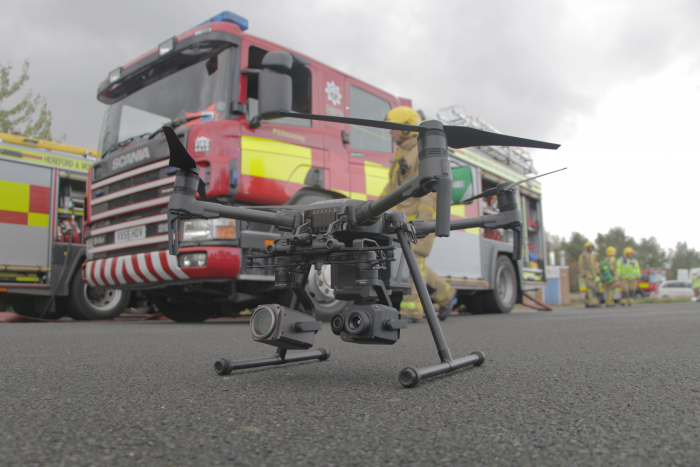
Updated on • 18 Aug 2024
How To Maintain Your DJI M200 Drone
DJI has released guidance on how best to care for and maintain your DJI Matrice 200 Series V1 drones. ... Read More

DJI has released guidance on how best to care for and maintain your DJI Matrice 200 Series V1 drones.
The information relates to all M200, M210 and M210 RTK V1 aircraft and includes safety resources and best practices.

It comes following a small number of incidents relating to this industry-leading drone series, which DJI suspects may have been caused by water infiltration.
At this point, it is important to state that there have been no incidents with the recently-released M200 Series V2, which can be purchased through Heliguy. The V2 drones are a rebooted version of the V1 series, with better reliability, safety and security features. To read about the key differences, click here.
Operating Your Matrice 200 In Wet Weather Conditions
So, with the possible water infiltration issues in mind, just how waterproof are the M200 V1 drones?
Under stable laboratory conditions, they achieve an IP43 rating by IEC60529 standards when equipped with standard TB50-M200 or TB55 Intelligent Flight Batteries.
However, DJI says that this protection rating is not permanent and may reduce over time after long-term use.

An IP43 protection rating means:
Protection is provided against access to hazardous parts (e.g., electrical conductors, moving parts) and the ingress of solid foreign objects down to 1mm in diameter.
Water falling as a spray at any angle up to 60° from the vertical shall have no harmful effect.
Please ensure that when you're operating your Matrice 200, 210 or 210 RTK V1, you're not exceeding the limits stated above.
Although the IP43 protection will allow you to operate in some conditions, it's not a complete waterproofing.

With this in mind, here are some tips to help you keep your M200 Series V1 drone in optimal working condition, especially in and after inclement weather:
Do not fly when the amount of rainfall exceeds 10mm/h.
Do not fold the frame arms in the rain.
The angle of inclination of the aircraft body and the ground should not exceed ±60° when flying the aircraft in rainy days.
Make sure the battery ports, battery compartment ports, battery surfaces and battery compartment surfaces are dry before inserting the batteries.
Make sure the battery ports and battery surfaces are free from any liquid before charging the batteries.
Make Sure You Store Your M200 Correctly After Use
Another key bit of advice is storing your M200 drone correctly after use, especially when it has flown in wet conditions.
Before packing away your aircraft in its carry case, it is essential that it is free from any liquid by wiping it down carefully and drying it off.

As part of your post-flight checklist, it is important that you check the following parts to avoid damage from water intrusion:
Intelligent Flight Batteries: Check that the connectors between the batteries and aircraft are dry. Dry the aircraft and batteries with a towel before storage.
FPV Camera: Check that the camera is dry, especially along the roll axis where the camera meets the gimbal frame.
Aircraft Arms: Ensure that the arms and arm locks are dry before unlocking and folding.
Rear aircraft port where pair button and USB port are housed: Keep dry and closed while flying. Ensure this area is dry before storage.
Downward Gimbal Connector: Keep dry, avoid disconnecting a camera and leaving the gimbal connector exposed in the rain or other wet-weather conditions.
Keep the gimbal and camera away from sand and water, and wipe them down if they've been exposed to sand or water.

Safety Resources and Best Practices
If you're flying a Matrice 200 Series V1 drone, you should refer to the maintenance guidelines for your aircraft.
By following these guidelines you can maximise the lifetime of your drone and keep flights as safe as possible.
Click the button below to download a PDF copy of the maintenance guidelines for the Matrice 200 Series V1 drones:
Download Maintenance Guidelines
Also, you should be following the safety guidance for the TB50 and TB55 batteries, depending on which aircraft you're flying.
If you're flying a Matrice 200, 210 or 210 RTK V1, please follow the TB50 battery safety guidelines found here.
If you're flying a Matrice 200, 210 or 210 RTK V2, please follow the TB55 battery safety guidelines found here.

What else do I need to look out for?
DJI is working on further guidance, including a guide on the expected lifespan of various components on the aircraft and a range of reliability and safety standards.
If you're flying a Matrice 200 V2, 210 V2 or 210 RTK V2 - then DJI has stated that various improvements to the internal structure and design of these aircraft are likely to give them a longer lifespan than their V1 counterparts. But once again, it is important to state that there have been no incidents with the V2 Series.

How Can I Reduce My Maintenance Burden?
Heliguy offers a drone rental service. Drone hire reduces upfront costs significantly, gives you access to the latest equipment, and ensures you're always able to react to changing requirements in your organisation.

If you have any queries about maintaining your Matrice 200 Series drone, please don't hesitate to let us know by emailing info@heliguy.com or giving us a call on 0191 296 1024.

written by
James Willoughby
James joined heliguy™ in 2018 following a 13-year stint in print and online journalism, having worked on regional and weekly newspaper titles. He is responsible for spearheading heliguy™'s content strategy and social media delivery. James collaborates with DJI Enterprise's European marketing team to coordinate and produce case studies and helps organise events and webinars.